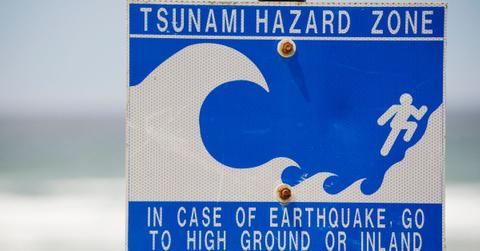Deadly Threat: Hidden Fault Line Could Spell Doom for Western United States, Researchers Say

Experts say a newly discovered fault line running diagonally across a Canadian peninsula has the potential to trigger a catastrophic tsunami.
Dec. 20 2023, Published 3:01 p.m. ET
Researchers have identified a fault line traversing a Canadian peninsula, raising concerns about the potential for a significant tsunami that could impact a vast area, including portions of the United States.
The fault, named "XEOLXELEK-Elk Lake fault" or "XELF," was detailed by scientists from France, the United States and Canada in a study published in the journal Tectonics recently.
Initially, suspicions of a fault line in the heavily forested Saanich Peninsula on southeast Vancouver Island led experts to conduct on-site investigations.
Shallow geophysical surveys and evidence of magnetic activity confirmed the existence of the fault, characterized as a "slip-dip" fault where rocks move vertically against each other, according to Tectonics.
Stretching approximately 45 miles diagonally from northwest to southeast along the peninsula, the XELF poses a potential hazard to the roughly 400,000 inhabitants of the region, researchers state.
In the event of an earthquake along this fault, a tsunami could be triggered, affecting not only Greater Victoria but also reaching areas like Vancouver and parts of Washington state, including Seattle, Bellingham, Olympia and Tacoma.
- Groundbreaking Revelation: Discovery of Tectonic Plates 'Unzipping' Beneath Tibet May Help Predict Future Earthquakes
- Volcanic 'Megabeds' in Mediterranean Can Help Predict Catastrophic Events: Study
- A Washington Teen Told Her Mom She'd Walk Home From School But Never Returned. Was She the Victim of a Notorious Serial Killer?
The study points to evidence of a past earthquake on the peninsula, occurring between 4,700 and 2,300 years ago, with an estimated magnitude between 6.1 and 7.6, likely causing a tsunami.
However, the limited data from a single earthquake makes it challenging to predict when another seismic event might occur along the XELF.
Never miss a story — sign up for the Front Page Detectives newsletter. Be on the scene the moment news breaks.
Normally multiple earthquakes are needed in order to estimate intervals, so researchers emphasize the ongoing necessity for further research to understand the potential hazard posed by the fault, The Science Times reported.
While predicting the timing of future earthquakes remains challenging, the researchers stress the importance of delving into the fault's historical activity to assess the risk it presents to nearby populations. They underscore the need for continuous efforts to update regional earthquake hazard models and enhance earthquake preparedness in the affected areas.
Become a Front Page Detective
Sign up to receive breaking
Front Page Detectives
news and exclusive investigations.
